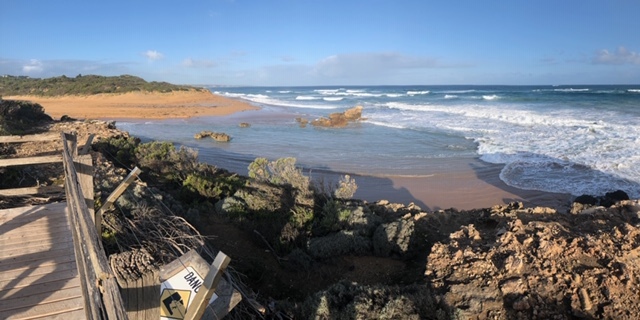Hopkins River estuary
The Hopkins River estuary includes the Hopkins River 9.5km from the river mouth at Warrnambool to Tooram Stones near Allansford. It has a surface area of approximately 1.6 km² and a volume of 3,100 ML. It is confined by a rock walled canyon for much of its length and is a drowned river valley. The current form of the Hopkins River estuary is young, only forming around 6,000 years ago. The floor of the estuary is mostly mud, with some sandy areas.
The estuary is a wave dominated estuary. This means the energy at its mouth is more influenced by wave action than the tides, although tidal flows affect conditions within the estuary when the mouth is open. The mouth is seasonally closed, shallow and underlain by rock bars. Water quality varies through the year depending on flow and entrance conditions. The estuary is termed a salt wedge estuary due to a deep saltwater layer and shallow freshwater layer that exist for much of the year.

Thirty-nine species of fish are known to inhabit the estuary, including highly valued recreational species such as black bream, mulloway and estuary perch. Thirty-three species of birds have been recorded including migratory species.
The estuary is highly valued by the local community, for recreational fishing, water sports, the heritage listed Proudfoots Boathouse, river boat cruises, and the value of adjacent land.


